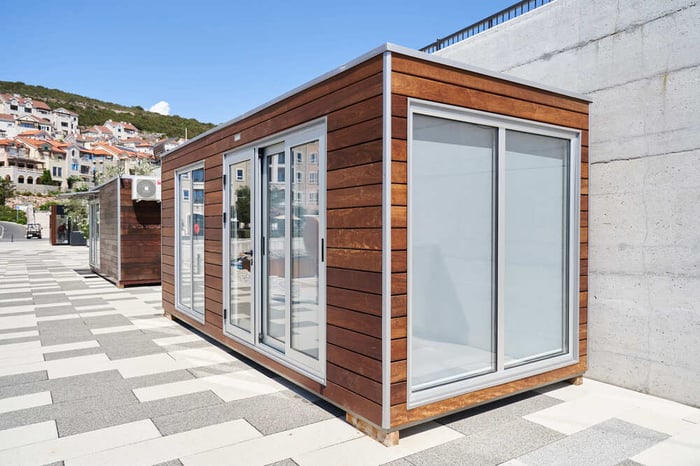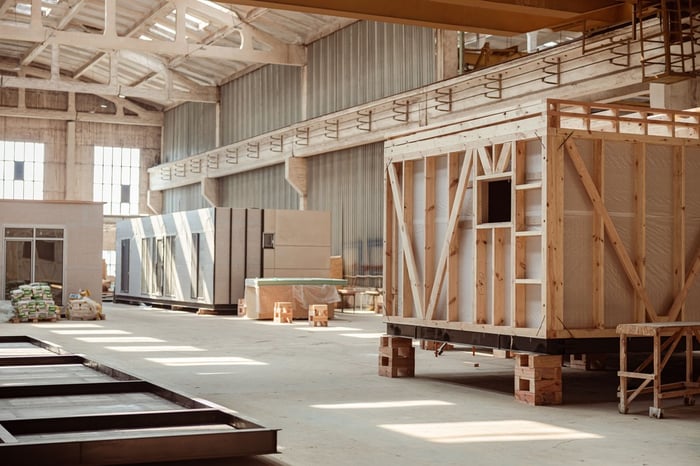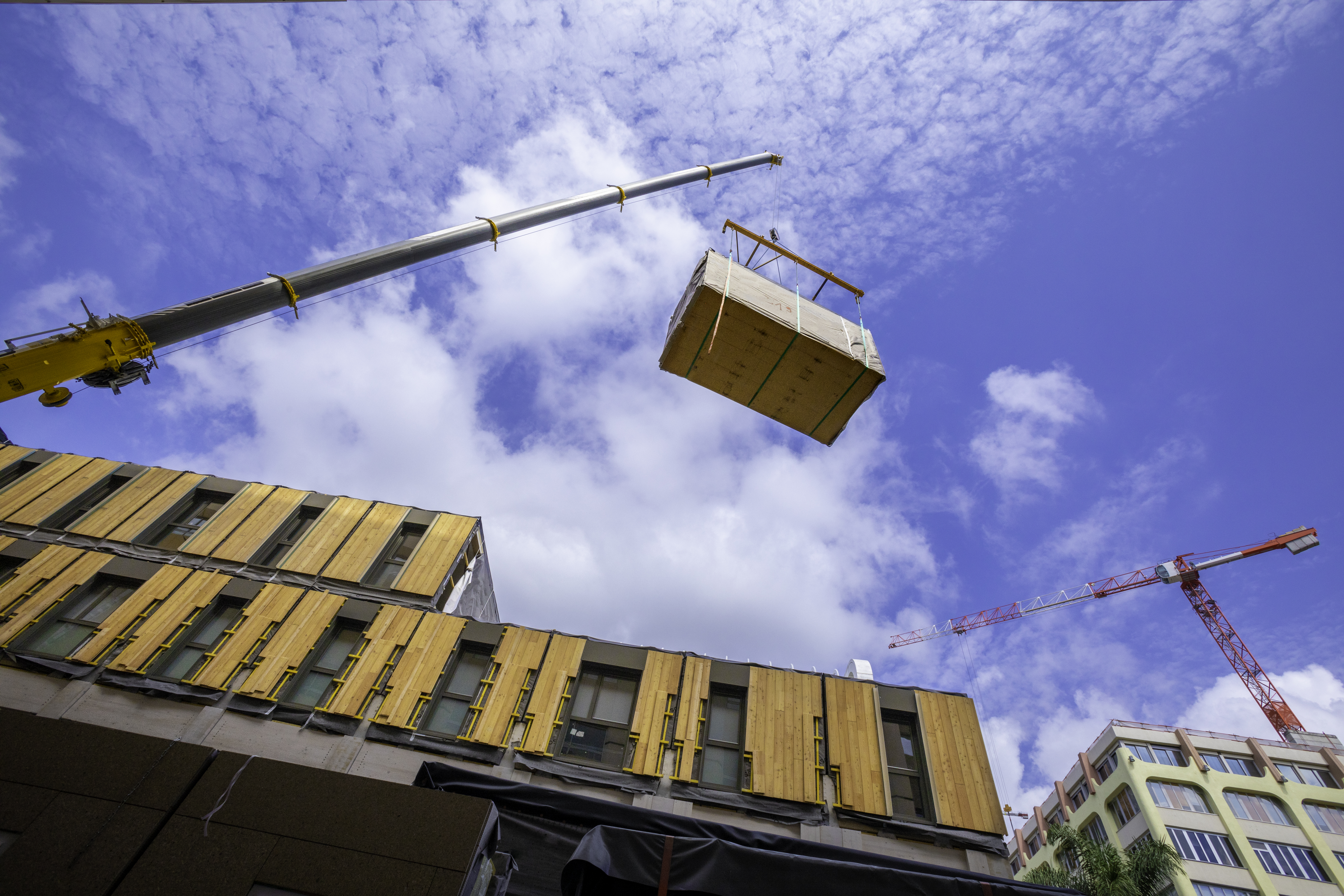The building industry is in a continuous process of adapting to the social, economic, and environmental context, always trying to meet the new needs of demand or population. The move towards sustainability and the minimisation of environmental impact are key factors in recognising companies that are leading these changes in the sector.
Among the strategies to improve the environmental performance of the sector, one of the most interesting options is modular construction. This practice allows for the industrialization of a large part of the construction process, thus enabling more efficient, planned, and controlled work.
What does modular construction consist of?
It is a construction method based on the use of prefabricated modules, made in a factory or workshop. The structures (whether they are homes, offices, or other properties) are made from one or several modules, which are transported to their final destination after assembly.
This trend departs from the traditional construction process at different levels, either by not taking place on site or by involving industrialised or chain processes. Modular construction, with its distinct characteristics and the possibilities it offers, could therefore revolutionise the current landscape.
A sustainable alternative to traditional construction
Modular construction offers several advantages that make it a more sustainable alternative to traditional construction. There are various factors that improve the energy efficiency of buildings, both during the construction process of the modules and of the building once finished.

The choice of materials for the construction of the modules plays a key role in determining the energy efficiency of the final product. The use of lightweight materials, such as laminated wood or steel structures, will require fewer resources for transporting the module. Proper use of insulating materials will make the result more energetically efficient, helping to reduce energy use for cooling or heating the building.
The use of recycled and recyclable materials will reduce the carbon footprint of the project, as well as promoting a more sustainable use of natural resources. The proximity and origin of the materials to be used must also be taken into account, with purchasing from local suppliers being a more sustainable option. On the other hand, thanks to its easy dismantling, the materials can be used for other purposes or the construction of other modules.
A sustainable design, adapted to the characteristics of the site, through strategic orientation and the use of solar panels and other renewable energy generation systems, will result in a more sustainable building. In addition, the industrialised and controlled production of modules enables easy installation of energy monitoring and control systems.
Other advantages of modular construction
Putting aside the sustainable projection that this construction method offers, there are other important advantages that make it increasingly attractive in the eyes of the market.
- Cost reduction is one of the main benefits of modular construction. By working in a serialized manner, the labour required decreases considerably, as does the production cost. Furthermore, by constructing the modules in a controlled environment such as a workshop or factory, the chances of unforeseen events occurring are considerably lower. These factors make the selling price lower, making it more attractive to the customer.
- Another advantage of this construction method is the reduction of the construction time. By being able to work concurrently, manufacturing the modules in the workshop while preparing the site for their installation, the project time is reduced, as well as having the opportunity to build more than one module at a time in the workshop. Moreover, during its manufacturing, there will be no interruptions that usually occur in traditional construction, such as unfavourable weather conditions or supply issues. This acceleration in delivery times is beneficial for both the client and the construction company, as it allows them to handle more projects simultaneously.

- Flexibility and customization offered by the use of modules are also decisive. Unlike what is traditionally known as prefabricated houses, modular construction allows for the creation of buildings with a high architectural standard. The same module can be used to create different rooms or even floors, so a good design will allow the creation of properties with ingenious architecture, while also being comfortable and attractive for the client. On the other hand, modular construction offers the opportunity to extend the building with additional modules more easily and economically than traditional construction.
In any case, we cannot overlook the existence of limitations in this construction method. While it is true that modular construction offers a high level of customization, for many clients it is insufficient compared to the possibilities offered by traditional construction. On the other hand, it should be noted that if the space where the construction is to be located has unusual topographic characteristics or is in a place of difficult access, there may be complications in installation and transportation. Therefore, although it has some limitations, these can be overcome through good planning and design.
In conclusion, modular construction is a cost-effective, efficient and sustainable solution and could bring about a large-scale change in the building industry with its popularisation. It is an innovative and attractive alternative for an increasing number of companies in the sector. Ultimately, less can end up being much more: constructing buildings from modules is an excellent option to consider.


